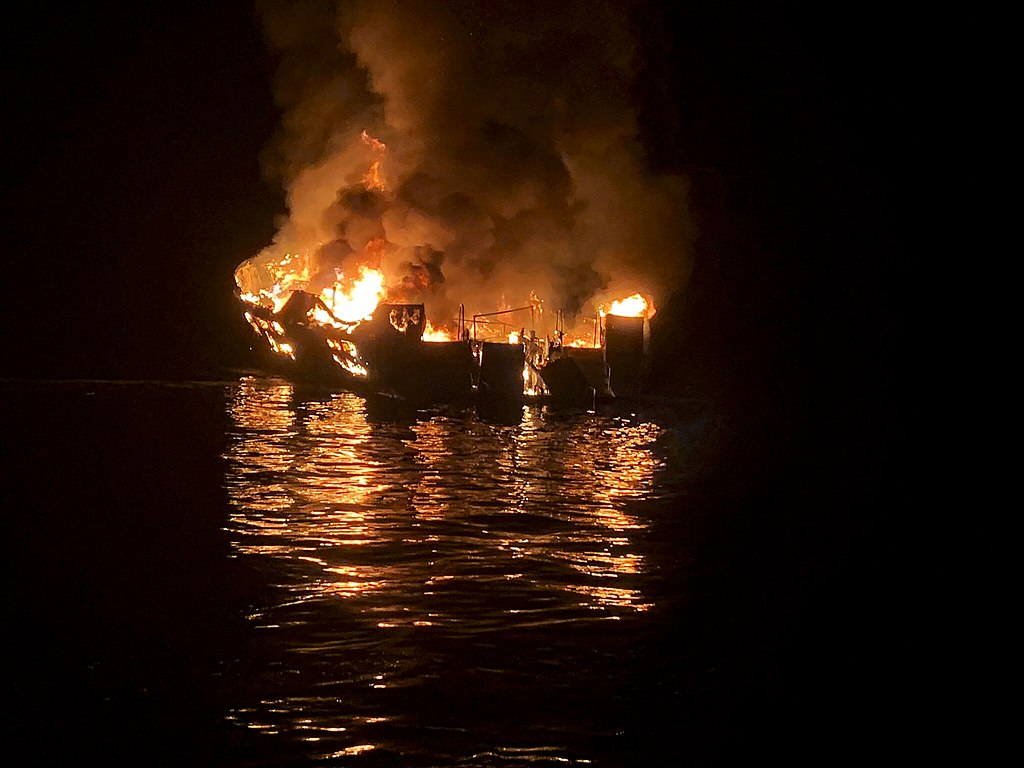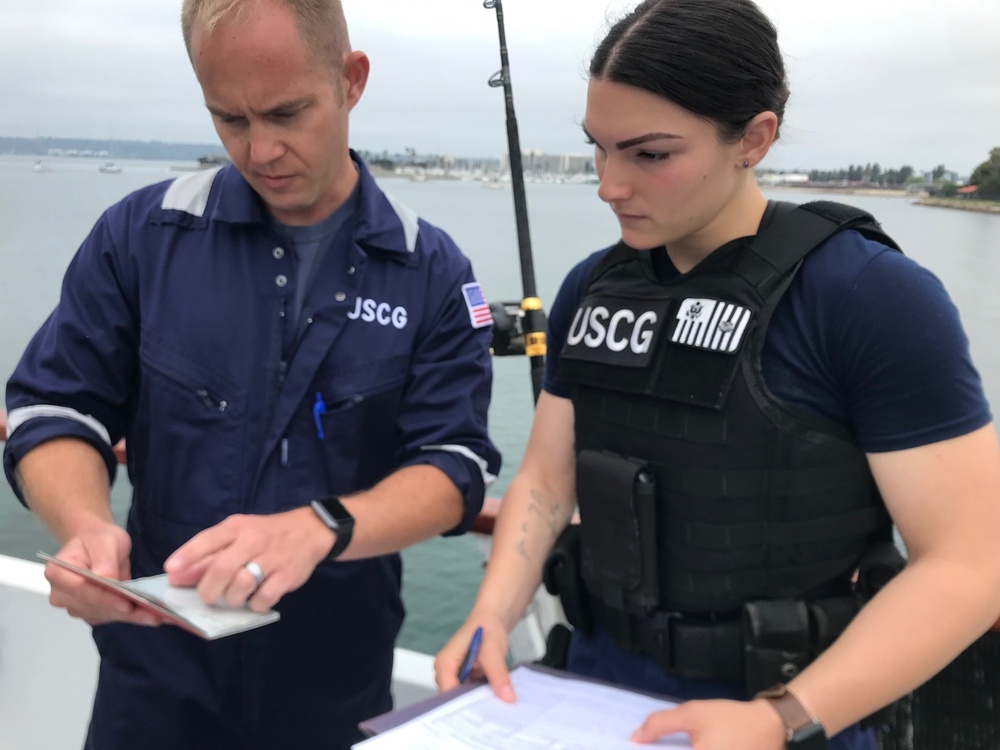
New US Coast Guard Procedures Stem from ‘Conception’ Tragedy
The US Coast Guard has implemented new procedures in the wake of the September 2019 fire that killed 34 people aboard the dive vessel Conception. A USCG press release states that the initiative “enhances underway presence and improves safety aboard small passenger vessels operating off the California coast.”

Safety compliance checks are being conducted underway on smaller, US-inspected passenger vessels to ensure continued regulatory compliance while vessels are conducting operations with paying passengers aboard.
USCG’s Eleventh District commander Rear Admiral Brian Penoye said, “Our intent with these safety compliance checks is to bridge gaps that were identified following the fire onboard the passenger vessel Conception which resulted in the tragic deaths of 34 people.
“We discovered that there are a number of operational requirements that are impossible to verify during a dockside annual inspection. The Coast Guard has been and continues to take deliberate steps to improve the safety of small passenger vessels in order to prevent future loss of life.”
The press release states the compliance checks are focused on ensuring the safety of passengers aboard inspected passenger vessels by focusing efforts to confirm that the following criteria are being met while the vessel is in operation:
- Vessels that offer multi-day trips with overnight accommodations are required to have a crewmember on watch at night, available to rapidly respond to emergencies and commonly referred to as a roving patrol.
- Habitable areas on the vessel must have two unobstructed exits to allow passengers a way to escape in case of an emergency.
- Passengers must receive a verbal safety brief or a copy of the vessel’s emergency plan before or right after getting underway.
- Vessel sails with a number of passengers equal to or less than the maximum number of passengers listed on the Certificate of Inspection (COI).
- Vessel manning is in accordance with the manning required on their COI for both licensed and unlicensed crew.
- All lifesaving and firefighting equipment is properly maintained and is not in an expired condition.
- The materiel condition of the vessel is such as to minimize excess fuel and/or water in the bilges.
People aboard these vessels may see Coast Guard inspectors come aboard during the day and night to check that safety requirements are being met.


A little inconvenience is a small price to pay for safety at sea .
Two thumbs up ??!!!
How about smoke alarms and carbon monoxide detectors? If those were present all may b alive
Not a word about Lithium battery storage lockers or Lithium battery charging stations. http://www.fireextinguishersstore.co.uk/bang-a-sudden-unexpected-fire-lithium-ion-battery-dangers/
A steel footlocker with secure locking system, with the power requirements to handle everyone’s phone, tablet, computer, and camera systems is required. They stated the fire started with a lithium battery fire, yet they didn’t address this with their new regulations. They even now have special lithium battery (fire) bags, that you charge your batteries in, and if they burst into flames, keeps your home/office/boat safe.
Many more will massive fires will continue until people acknowledge the danger. FAA has, and made special rules for it.
I don’t want the Government dictating what batteries are allowed and storage of those batteries or charging regulations on board my vessel and neither do you. That vessel was not in compliance because they never had a night watchman on duty. Period!
Just a bunch of blather to make it sound like they have done something big to prevent another disaster. When, in fact, just smoke detectors and a competent watch would have prevented this. All the rest of this “New US Coast Guard Procedures” is hooey to sound proactive when it actually does nothing but hassle boats with nonsense inspections. Commercial vessels are, and should be, carefully inspected each year. I’ve been on all of the Truth boats and don’t remember many, if any, smoke detectors. Should be several at both levels.
USCS requirements for any boat that has propane is a propane leak detector… all boats required a smoke detector, and mine had the CO2 detector also, in the forward stateroom (v-berth (lol)) and one in the aft kitchen. (both were nest products). I’m paranoid about having working smoke detectors; I think in a past life, I died in a fire. I always check for them, and would make sure they are working. Every sleeping, cooking, electronics and fuel area should have had one. The nest is cool because they communicate with each other via bluetooth, so one sounds, they all sound off. So a fire in the aft scuba platform area would have sent the sleeping quarters and cockpit alarms off.
In short, everyone died over missing $50 smoke detector that sometimes, fire departments give for free to anyone who asks?